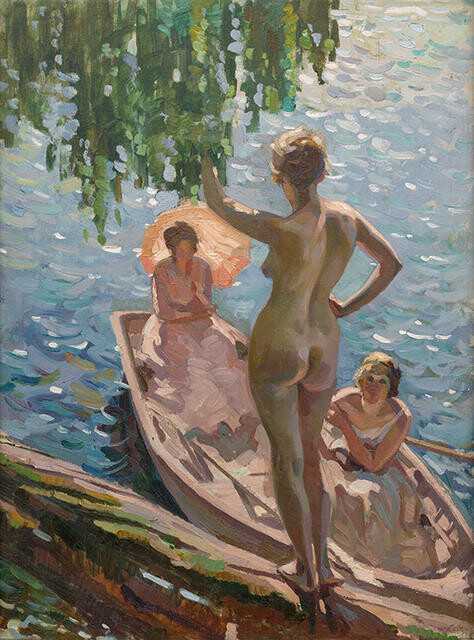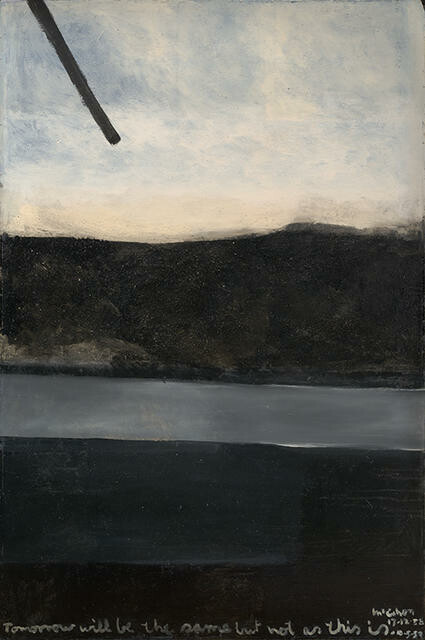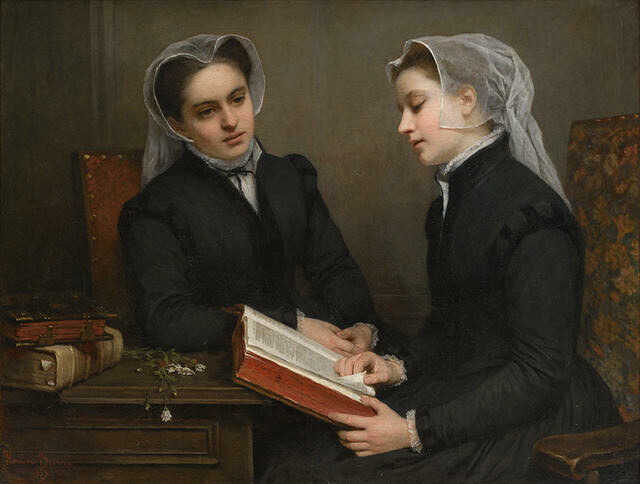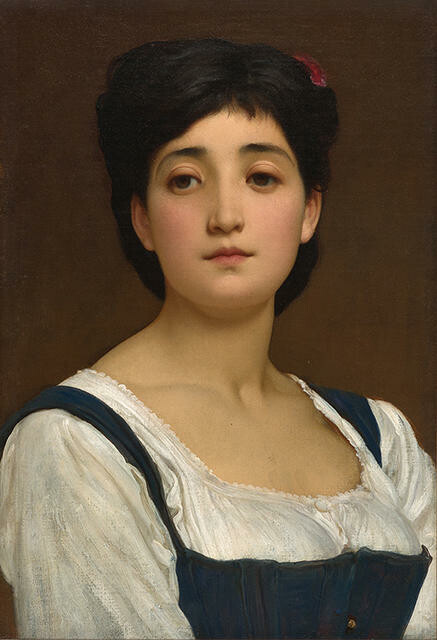B.
The Painting collection: Focusing on New Zealand
Collection
The initial focus of the Canterbury Society of Arts collection had been painting by both British and New Zealand living artists acquired for educational purposes. The Society did not set out to form a museum-type painting collection, although it was conscious of the need to improve the standard of the work represented.
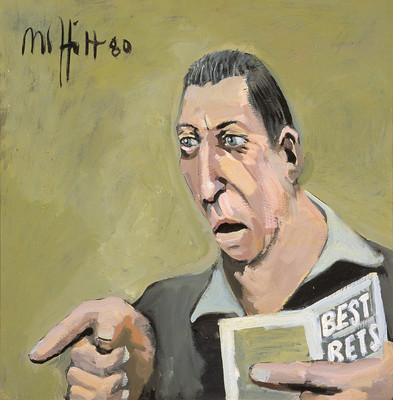
Trevor Moffitt No son of mine goes to university 1980. Oil on board. Collection of Christchurch Art Gallery Te Puna o Waiwhetū, purchased 1982. Reproduced with permission
By the 1900s, the Paintings Collection had grown considerably through works acquired by purchase, gift and bequest. It was not until 1906, when the New Zealand International Exhibition was held in Christchurch, that an opportunity arose to purchase contemporary British works of a higher standard. Among the acquisitions were works by Solomon J. Solomon, Henrietta Rae, Charles D. Leslie and Richard Anning Bell, most of which are still represented in the Collection. Perhaps the most important painting purchased at that time was Teresina by Frederick, Lord Leighton. This small study of an Italian girl, painted around 1875 and exhibited at the Royal Academy in 1876, remains one of the Gallery's treasures of Victorian painting. Many years after its acquisition, a curious misunderstanding regarding the identity of the painting's subject occurred, which was to continue for generations within a local family.
The peculiar tale began in 1936, when an elderly woman visited the McDougall Art Gallery and told the Custodian, Horace Cowell, that she was the model for Leighton's painting. It seemed initially plausible as her name had been Teresa Toffineri, but it was later revealed that she was born nine years before Leighton painted Teresina and therefore could not possibly have been the model. How had the confusion arisen? It seems that an engraving after Leighton's Teresina had been reproduced in an English art journal. Around 1883 Teresa, who was then an 18 year old shop assistant at Beath and Company and also modelled part-time for a Canterbury College life class, posed at one session wearing traditional Italian costume. Inspired by the engraving, the students adopted Leighton's composition and produced several variants of the painting. Naturally, when many years later the model saw Leighton's work on her visit to the Gallery, she was convinced she was looking at a portrait of herself made by one of the life class students. Until a decade ago, Teresa's descendants were still requesting to see the portrait of their grandmother. Finally, they reluctantly had to accept that Lord Leighton and Teresa Toffineri had never met. It seems a strange coincidence that a work so greatly admired in reproduction in New Zealand in 1883 should have been brought to New Zealand for exhibition 22 years later, to eventually become an important part of the public Paintings Collection.
In 1911, other British contemporary paintings were acquired with the assistance of a Government grant and between 1912 and 1928 a large number of contemporary New Zealand paintings were added with assistance from a Christchurch City Council grant. The Gallery also received many other works as gifts, including the well-known Dutch Funeral (1872) by Petrus van der Velden and La Lecture de la Bible (1857) by Henriette Browne. In its inaugural year, the Gallery received 27 paintings from the former James Jamieson collection. Whilst this was a boost to the Collection, most of the works were still post-1850, with just four from previous centuries. The prospect of the Collection developing in a more international direction was further frustrated in the mid 1930s as there were no funds to acquire paintings and insufficient staff to manage this aspect of the Gallery's operation.
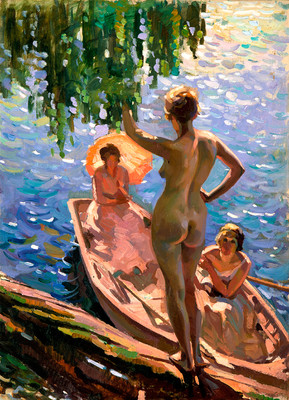
Evelyn Page Summer Morn 1929. Oil on canvas. Collection of Christchurch Art Gallery Te Puna o Waiwhetū, E Rosa Sawtell Bequest 1940. Reproduced courtesy of Sebastian Page and Anna Wilson
The May Schlesinger Bequest of 1938, with the assistance of Sydney Thompson, enabled four paintings by well-known early 20th Century French artists to be purchased. Whilst these paintings complemented the existing Collection, they were still relatively conservative, with one exception: In the Woods by Othon Friesz. The 1940s saw major gifts of both British and New Zealand paintings. Among them was Summer Morn (1929), an important painting by Evelyn Page, bequeathed by the artist Rosa Sawtell. Its freshness and liveliness of colour made it a significant acquisition, but unfortunately its exhibition life was cut short when the painting's model objected to the work's display, leading to its official removal from the Gallery's walls. Threatened with legal action, the Christchurch City Council decreed that the painting could not be shown publicly during the model's life, meaning it was not exhibited for over 30 years.
When the Christchurch City Council first allocated 'Picture Purchase' funds to the Gallery in 1948, the collection was still small, totalling only 247 works, of which 136 were oil paintings. The lack of contemporary New Zealand and British painting drew considerable criticism from the Christchurch arts community. In an attempt to help rectify this, architect and art connoisseur Heathcote Helmore visited the Lefevre Gallery while in London in 1956 and was impressed by recent paintings by L. S. Lowry. With Lowry's approval, two of these paintings were sent out for the Canterbury Society of Arts 1957 autumn exhibition, where they were available at £180 each. As a result, Factory at Widnes (1956) was purchased for the Collection, and now stands as the most important purchase of the late 1950s with one exception, Tomorrow will be the same but not as this is (1958-9) by Colin McCahon, a painting which had a much more stormy passage into the Collection.
In 1959, criticism of the Gallery's collecting policy came to a head when an exhibition of recent work by Colin McCahon was held and several local artists opened a subscription to purchase a work for the Collection. Tomorrow will be the same but not as this is was chosen, but a positive response to the acquisition was not immediate. During debate at a City Council meeting, one City Councillor described the work as "a figurative monstrosity which should not be permitted to hang in our beautiful gallery". Despite this criticism, it was eventually accepted and became the first truly progressive work acquired for the Contemporary New Zealand Paintings Collection. Whilst works by contemporary living artists had been acquired before this date, the McCahon purchase signalled a way forward into the future.
During the 1960s, a number of notable bequests contributed several important British and European works, including the oldest and most valuable painting in the International Collection, The Physician (17th C.), by Gerard Dou. As magnificent as this acquisition was, it was increasing unlikely that a significant European Old Master collection would be formed. In 1969, in a report made on the Gallery for the City Council, Dr Eric Westbrook suggested that it was: "...good policy to concentrate on New Zealand art as it helps local people establish a national identity and visitors national achievement." Despite this, Westbrook did not rule out the purchase of further international works. This report became the basis of the Gallery's collecting policy in the 1970s and in 1974 the Christchurch City Council voted to contribute $10,000 for the purchase of European Master art, an impossible task from such a meagre resource. Remarkably, a few good early paintings were purchased, but many inferior works, particularly in English portraiture, were acquired. In contrast, many of the contemporary New Zealand paintings acquired in that decade were of excellent quality, revealing foresight for which we remain grateful today.
At the beginning of the 1980s, the collection policy was changed to reflect the resources available for Gallery's Painting Collection and a decision was made to cease attempts to purchase British and European paintings and to concentrate primarily on works by Canterbury and New Zealand artists. This decision involved remedying gaps in the New Zealand historical collection as well as maintaining a steady growth of works by contemporary artists, a focus that has remained up to the present day.
Neil Roberts
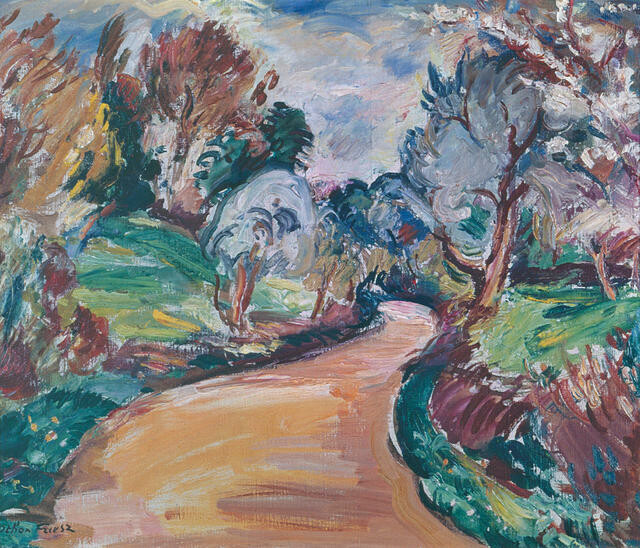
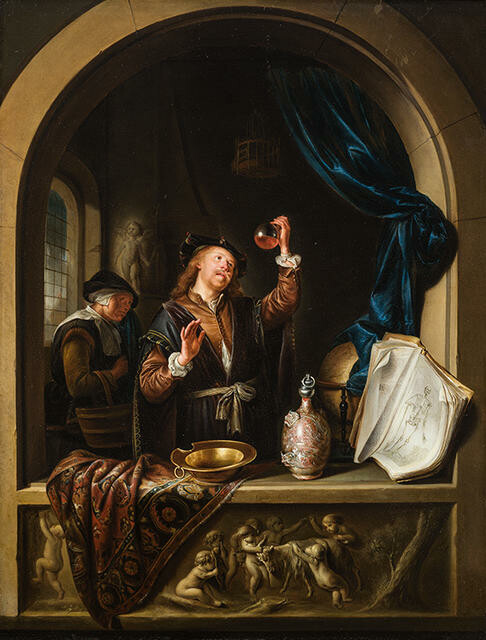
![Burial in the Winter on the Island of Marken [The Dutch Funeral]](/media/cache/80/51/8051abe0229037b3a1129ac62559ce27.jpg)
